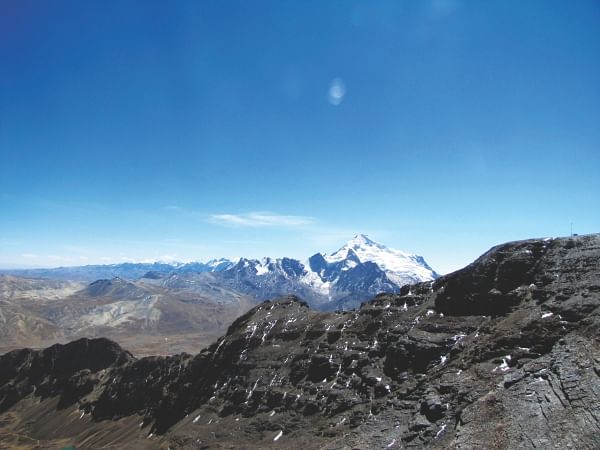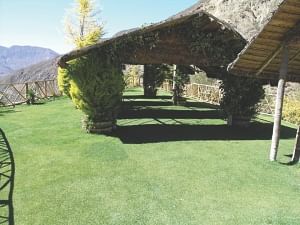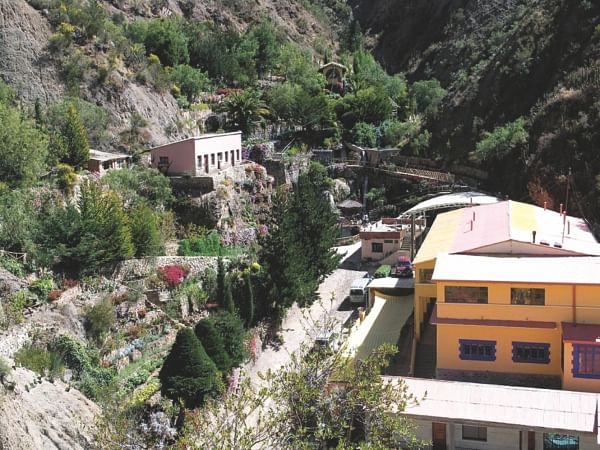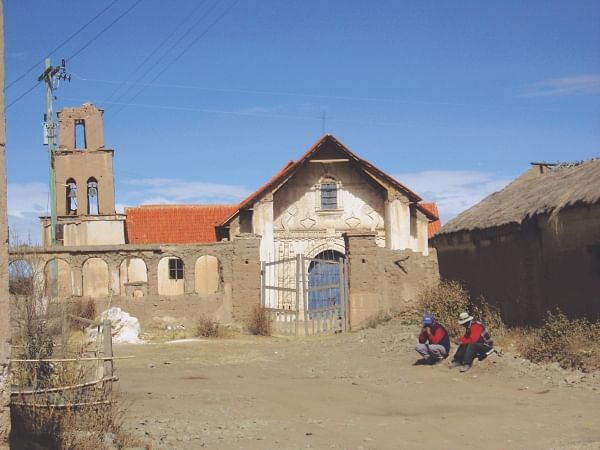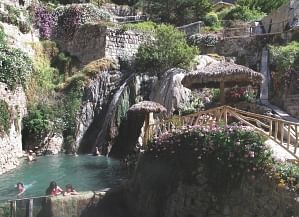| Home - Back Issues - The Team - Contact Us |
 |
| Volume 11 |Issue 44| November 09, 2012 | |
|
|
Travel
Under the Sky, Not Far Andrew Eagle High in the mountains of Urmiri, Hotel Gloria sits like stupid poetry. Tucked into a minor Andean crease in the South American shirt, beneath the great plateau, the Altiplano, the lodgings at the end of the road, and without a nearby town, are unexpected. Above, the Andean day-skies are of their usual intense blue and it feels as though they hold the power to, with some great invisible ropes, lift those very mountains into place and keep them there. Maybe they do. The sky feels close enough that you could touch it. Maybe you can. Yellow and somehow Pyrenees-looking the hotel may be, but its character is unmistakably Bolivian, from the dust in the wind to the bowls of round-potato soup and the llama steak on the dinner plates. Just a few hours from La Paz, it's not at all a bad destination for a weekend getaway. The mountains of the zigzagging, narrow and dusty road in from Calamarca are brown and bare, and with the steep drop just beyond the road's edge, with the hairpin bends and an old road tunnel, arrival is accompanied by a degree of trepidation and a sense of adventure. For most of the way, there is only the gigantic valley, with the squares and lines of Urmiri village just discernable, far below, and further still, the winding fold at the lowest point of the valley to signal the flow of a small river. It is only in the final stages of the doodle-of-a-road that the hotel comes into the picture, and there's the dawning of the green to be seen.
That singular gully has been stone-by-stone terraced into gardens of wattle, geraniums and daisies. Beyond the building are paths to follow, on a small scale, among clusters of palm and gum trees, between beds of variegated succulents in whirlpool design. There are log seats to be found in small manicured patches of lawn that seem as temple-clearings to the ever-pervading Bolivian sky, or are perhaps for the giving of quiet reflection to poets. There's a small chapel in the garden in remembrance of that later God too, the one who immigrated to South America with the Spanish. It's that juxtaposition of organised greenery in the untamed mountains that surely would have made Wordsworth blabber and TS Eliot smirk.
On closer inspection the gully-of-the-pools is in fact two little gorges folded out of the mountain like the wings of a Japanese paper crane, and each is touched white with mineral residue as though Pachamama, spirit of the world, has cleaned her teeth there and forgotten to rinse out the sink after she was done. On closer inspection the steaming sulphur-water gushes out of the dry creek bed like little stanzas and tumbles over the small mineral stalagmite constructions like rhymes and assonance. The water flows into the black pool that has been constructed for swimming.
I wondered at how the mountains had made the spring, how the spring had made the yellow hotel and how the yellow hotel had made the flowers. It's the circle of life. And after the first swimming session, and after lunch, we sat sleepily up on the front lawn and there was a donkey far below, with a boy and a dog. I watched as they clambered, wandered, kicked and whistled down the zig zag steepness of goat trails, around cacti, being reduced to specks of movement on their way into the village.
I shifted into the cabana shade to continue the inactivity, wondering if donkeys and boys and dogs ever put a foot wrong and slipped. Do the mountains ever take them? But such were only my thoughts. A Persian sitting there may have dissected the scene into tight intellectual squares and composed lines of tight verse. A middle class Indian family might've unfolded a mat and sat to share food and chatter in honour of the beauty. A Bangladeshi might've been in awe with a slight pitter-patter to the heart at the altitude and the steep drop in the land, while Ukrainians might've been more inclined to laugh and look for a bottle of wine to open in celebration.
Yet this Australian with his friends was given to returning to the pool where the water held enough heat to warrant alternating between swimming and taking gaps of exposure to the cool Andean air. He noted that it was at the pool where all the Bolivian guests were. For them the mountain setting was usual rather than out of the ordinary; it was the spring water that was rare. That night the Milky Way shone as a short, sharp stripe between gaps in the ragged higher hills. And we swam once more. There was a shooting star that seemed, with a strong band of light, to divide the sky in two, nearly down to the horizon. And when they saw it, the Britons started discussion on what a shooting star actually was, and they asked me. I wondered if they'd never before looked up into the night sky and if that was so, then how was it possible for them to properly contemplate how small we are? 'It's the first shooting star I've ever seen,' the Londoner said. I set about explaining the meteor basics in accordance with science; but it might have been better in the context of the mountains of Urmiri on that Starry, Starry Night, to have answered instead in verse, something about the spine of South America or Pachamama's teeth, something of their Byron or Coleridge, something concerning the sky holding up the mountains or the birth vessel of the Andean peoples. It might simply have been better to have attempted some kind of stupid poetry because it might have been more accurate.
|
||||||||
Copyright
(R) thedailystar.net 2012 |
